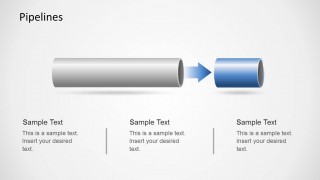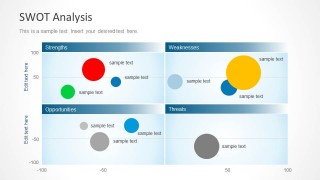Learn more how to embed presentation in WordPress
- Slides
- 25 slides
Copy and paste the code below into your blog post or website
Copy URL
Embed into WordPress (learn more)
Comments
comments powered by DisqusPresentation Slides & Transcript
Presentation Slides & Transcript
A...CHOO!Treating Hay Fever Naturally
In 1819, John Bostock MD was first to accurately describe hay fever as a disease that affected the upper respiratory tract.
26 million Americans suffer with hay fever each year!
Nasal congestionSneezingItchy eyes,nose and throat.
Causes of Hay FeverRagweed pollen accounts for 75% of hay fever in U. S.Other significant causes are grass and tree pollens.Spring - tree pollensSummer - grass and weed pollensYear round - ? pollens vs dust mites, cockroach debris, indoor mold, and pet dander
Causes of Hay FeverDustMites
Tips for escaping hay feverPollen levels are often highest in the morning.
Tips for escaping hay feverKeep your windows closed!
Tips for escaping hay feverMowing the grass or doing other yard work will exacerbate hay-fever symptoms.Enlist Yard Help!
Tips for escaping hay feverDon’t hang sheets or clothing outside on an outdoor clothesline when offending pollens are in the air.
Tips for escaping hay feverPollens may get trapped in them and can remain in the fabric even after you bring the laundry inside.
Tips for escaping hay feverIf your friends or family members smoke, ask them not to smoke around you, since cigarette smoke can aggravate hay fever.
nutritional considerationsLonger duration of breast feedingAvoid early introduction of potentially allergenic foods (whole cow’s milk, eggs, fish, nuts and cocoa)Children who eat less saturated fat and cholesterol and more omega-3 fats have less risk of developing rhinitis.
The influence of the dietary intake of fatty acids and antioxidants on hay fever in adults G. Nagel1, A. Nieters1, N. Becker1, J. LinseisenVolume 58, Issue 12,pages 1277–1284, December 2003
Volume 58, Issue 12,pages 1277–1284, December 2003Results: High intake of oleic acid was positively associated with hay fever [odds ratio (OR): 2.86, 95% confidence intervals (95% CI): 1.22–6.70], whereas high intake of eicosapentaenoic acid was inversely related to hay fever (OR: 0.45, 95% CI: 0.22–0.93). Furthermore, high β-carotene intake increased the risk of hay fever (OR: 1.69, 95% CI: 1.09–2.63) while increasing intake of vitamin E was a protective factor (OR: 0.38, 95% CI: 0.17–0.85). In grouped analyses, the effects of β-carotene and vitamin E were mainly observed among women and ex-/current-smokers; in these subgroups, linoleic acid increased the risk of hay fever.
supplement list - hay feverBromelain - Tablet: 250 to 500 mg daily between mealsEchinacea - Capsule: Take up to 1,200 mg daily of an extract standardized to contain 125 mg of E. augustfolia root and at least 3.2% echinacoside. Omega-3 Fatty Acids - Take 3-5 gms of omega-3 fatty acids per day, in divided doses, with meals.
supplement list - hay feverQuercetin - Capsule: Take 250 to 500 mg two or three times a daySpirulina - Capsule: Take 3-5 gms daily, divided into three dosesVitamin C - Capsule or tablet: Take 250 to 500 mg twice daily
Tomooka, L. T., et.al. Jan. 2, 2009, Clinical Study and Literature Review of Nasal Irrigation. The Laryngoscope, 110: 1189-1193
Objectives/Hypothesis Nasal disease, including chronic rhinosinusitis and allergic rhinitis, is a significant source of morbidity. Nasal irrigation has been used as an adjunctive treatment of sinonasal disease. However, despite an abundance of anecdotal reports, there has been little statistical evidence to support its efficacy. The objective of this study was to determine the efficacy of the use of pulsatile hypertonic saline nasal irrigation in the treatment of sinonasal disease.Study Design A prospective controlled clinical study.
Patients were instructed to irrigate each nostril with 250 ml of lukewarm tap water mixed with a half-teaspoon of table salt twice daily.
Methods Two hundred eleven patients from the University of California, San Diego (San Diego, CA) Nasal Dysfunction Clinic with sinonasal disease (including allergic rhinitis, aging rhinitis, atrophic rhinitis, and postnasal drip) and 20 disease-free control subjects were enrolled. Patients irrigated their nasal cavities using hypertonic saline delivered by a Water Pik device using a commercially available nasal adapter twice daily for 3 to 6 weeks. Patients rated nasal disease–specific symptoms and completed a self-administered quality of well-being questionnaire before intervention and at follow-up.Results Patients who used nasal irrigation for the treatment of sinonasal disease experienced statistically significant improvements in 23 of the 30 nasal symptoms queried. Improvement was also measured in the global assessment of health status using the Quality of Well-Being scale.Conclusions Nasal irrigation is effective in improving symptoms and the health status of patients with sinonasal disease.
NasalIrrigation
Little Known Medical FactThere are more living organisms on the skin of a single human being than there are human beings on the surface of the earth.
More Presentations

By ericrose82
Published Aug 22, 2013

By ericrose82
Published Aug 22, 2013

By ericrose82
Published Aug 22, 2013





